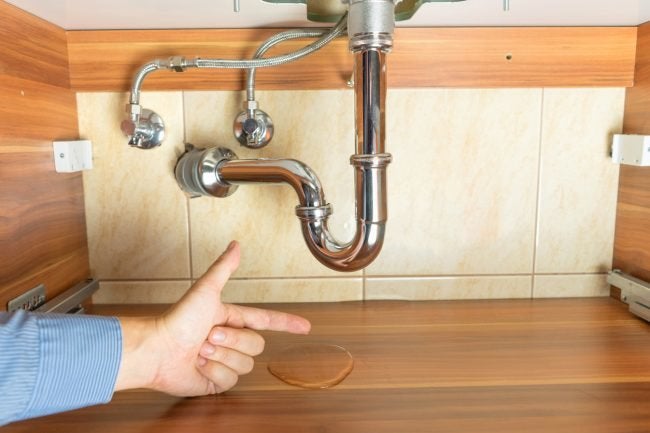How to Check If Your Home Has a Hidden Leakage
How to Check If Your Home Has a Hidden Leakage
Blog Article
Do you find yourself trying to locate facts around Detecting hidden plumbing leaks?

Early detection of leaking water lines can alleviate a possible catastrophe. In addition to saving you money, it will decrease the irritation as well as aggravation. The minute you locate a leak, calling your plumber for repair work is the most effective solution. Some tiny water leaks may not be noticeable. If you can not detect it with your naked eyes, right here are some hacks that assist.
1. Examine the Water Meter
Examining it is a guaranteed method that helps you uncover leakages. If it moves, that indicates a fast-moving leak. This indicates you might have a slow-moving leak that could also be below ground.
2. Examine Water Intake
Analyze your water costs and also track your water usage. As the one paying it, you must notice if there are any discrepancies. If you identify sudden changes, regardless of your intake coinciding, it implies that you have leakages in your plumbing system. Bear in mind, your water bill should fall under the exact same array every month. A sudden spike in your costs suggests a fast-moving leakage.
A constant increase every month, also with the same practices, reveals you have a slow leakage that's additionally slowly intensifying. Call a plumber to thoroughly inspect your home, specifically if you really feel a cozy area on your flooring with piping below.
3. Do a Food Coloring Test
When it comes to water usage, 30% comes from bathrooms. If the shade in some way infiltrates your dish throughout that time without flushing, there's a leakage in between the storage tank and also dish.
4. Asses Outside Lines
Do not neglect to examine your exterior water lines also. Examination faucets by affixing a garden pipe. Must water permeate out of the connection, you have a loose rubber gasket. Replace this and guarantee all connections are tight. It will certainly aid obtain it properly checked out and also preserved every year if you've got a lawn sprinkler system. One little leakage can squander lots of water and also surge your water expense.
5. Inspect and Analyze the Scenario
Property owners should make it a habit to examine under the sink counters and even inside closets for any type of bad odor or mold growth. These 2 warnings suggest a leakage so punctual interest is required. Doing regular examinations, even bi-annually, can save you from a major issue.
Much more notably, if you understand your residence is already old, maintain a watchful eye on your heating units, tubes, pipes and so on. Check for discolorations as well as weakening as many pipes and appliances have a life span. They will certainly additionally naturally deteriorate as a result of wear and tear. If you presume leaking water lines in your plumbing system, don't await it to escalate. Call an expert plumber immediately so you don't wind up with a terrible mess in your home.
Early detection of leaking water lines can reduce a potential disaster. Some small water leakages might not be noticeable. Examining it is a proven means that helps you discover leaks. One tiny leak can waste lots of water and spike your water bill.
If you suspect leaking water lines in your plumbing system, don't wait for it to escalate.
How to Know If Your Home Has a Hidden Leak
Water Meter Reveals Inexplicable Water Usage
If you’d like to test whether or not there’s a leak somewhere in your home, you can do this using your water meter. Here is how to conduct the test:
Don’t use any water in your home for at least 30 minutes; this also means not turning on faucets or water-using appliances.
Go outside, and check your water meter for activity.
If your water meter shows that there was activity, even though no one was using any water, this proves that there is a leak in your home.Visible Mold or Mildew Growth
Leaks behind walls create moist, dark environments that allow mold and mildew to grow and thrive. Eventually, you might see mold growth forming on the wall closest to a hidden leak.
If mold is growing in an area that receives a high amount of moisture, such as a bathroom, it may simply be an indication that better ventilation is needed. However, if you see mold growth on a wall or the ceiling in an area where you would not expect, you probably have a hidden leak.
Musty, Mildew Odor
Sometimes you might not be able to see the mold or mildew that is growing as a result of a leak. However, the smell can give the problem away just as easily. If you catch a whiff of something musty, there’s a good chance that old water is collecting somewhere in your home that you can’t see.
Stained/Warped Walls, Ceilings, or Floors
When your home soaks up water, a variety of red flags can become visible, including ceiling stains, bubbling drywall, warped walls, and sagging floors. While these issues can be caused by excess humidity, they can also be signs that a pipe or plumbing connection has started leaking behind your walls.
Inexplicably High Water Bill
After a while, you get a general sense for what your water bill should be. If you own a pool or sprinkler system, your bill will tend to be higher during summer. However, if you receive a water bill that seems especially high, and you can’t figure out what caused it, then you may have a hidden leak somewhere that’s increasing your bill.
https://www.plumbingjoint.com/blog/2019/july/how-to-know-if-your-home-has-a-hidden-leak/

We had been made aware of that article on Detecting hidden plumbing leaks from an associate on our other web page. Sharing is nice. One never knows, you could be helping someone out. Thank you for going through it.
Report this page